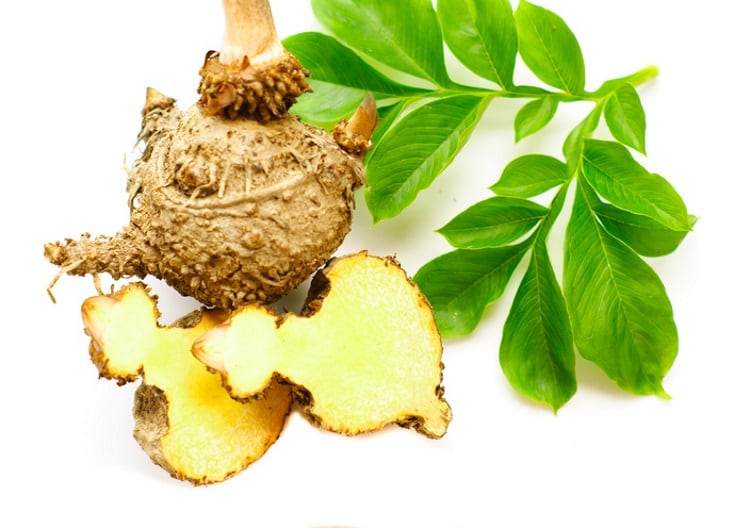Dietary fibre that can be declared on a product’s Nutrition Facts label must include certain naturally-occurring fibres that are ‘intrinsic and intact’ in plants – along with added isolated or synthetic non-digestible soluble and insoluble carbohydrates – the FDA has determined have beneficial health effects. These include lowering blood glucose and cholesterol levels, reducing calorie intake and increasing the frequency of bowel movements.
According to the FDA, glucomannan – found in the root of the elephant yam, or konjac plant, a native specifies of eastern Asia – meets the definition as it has been shown to help reduce blood cholesterol. Made into a flour, it also plays an important role in baking as a gluten-free thickening product.
Konjac flour – or konjac gum – has 10 times the viscosity of cornstarch, yet does not contain starch or sugar and has virtually no calories.
The most common use of konjac flour is as a thickener for pie fillings and puddings, but it also helps create soft, light and tender cookies, cakes, biscuits and breads – the typical driver behind its use by commercial bakeries. It can also be combined with wheat flour alternatives to improve the texture of gluten-free baked goods.
Changes to Nutrition Facts label
In 2016, the FDA published the final rules on the new Nutrition Facts label for packaged foods to reflect new scientific information, including the link between diet and chronic diseases such as obesity and heart disease.
The new label will make it easier for consumers to make better informed food choices.
There are now 17 categories of non-digestible carbohydrates the agency intends to propose to be added to the definition. Apart from naturally occurring fibre in foods such as veggies, whole grains, fruits, cereal bran, flaked cereal and flours, these include:
- Beta-glucan soluble fibre
- Psyllium husk
- Cellulose
- Guar gum
- Pectin
- Locust bean gum
- Hydroxypropylmethylcellulose
- Mixed plant cell wall fibres (a broad category that includes fibres like sugar cane fibre and apple fibre, among many others)
- Arabinoxylan
- Alginate
- Inulin and inulin-type fructans
- High amylose starch (resistant starch 2)
- Galactooligosaccharide
- Polydextrose
- Resistant maltodextrin/dextrin
- Cross linked phosphorylated RS4
- Glucomannan
Manufacturers with $10m or more in annual sales must switch to the new label by January 1, 2020, while smaller producers have until January 1, 2021 to comply.
Study:
Health-promoting effects of konjac glucomannan and its practical applications: A critical review
Authors: Ramya Devi Devaraj, Chagam Koteswara Reddy and Baojun Xua
International Journal of Biological Macromolecules
Volume 126, 1 April 2019, Pages 273-281 Published online December 23, 2018


